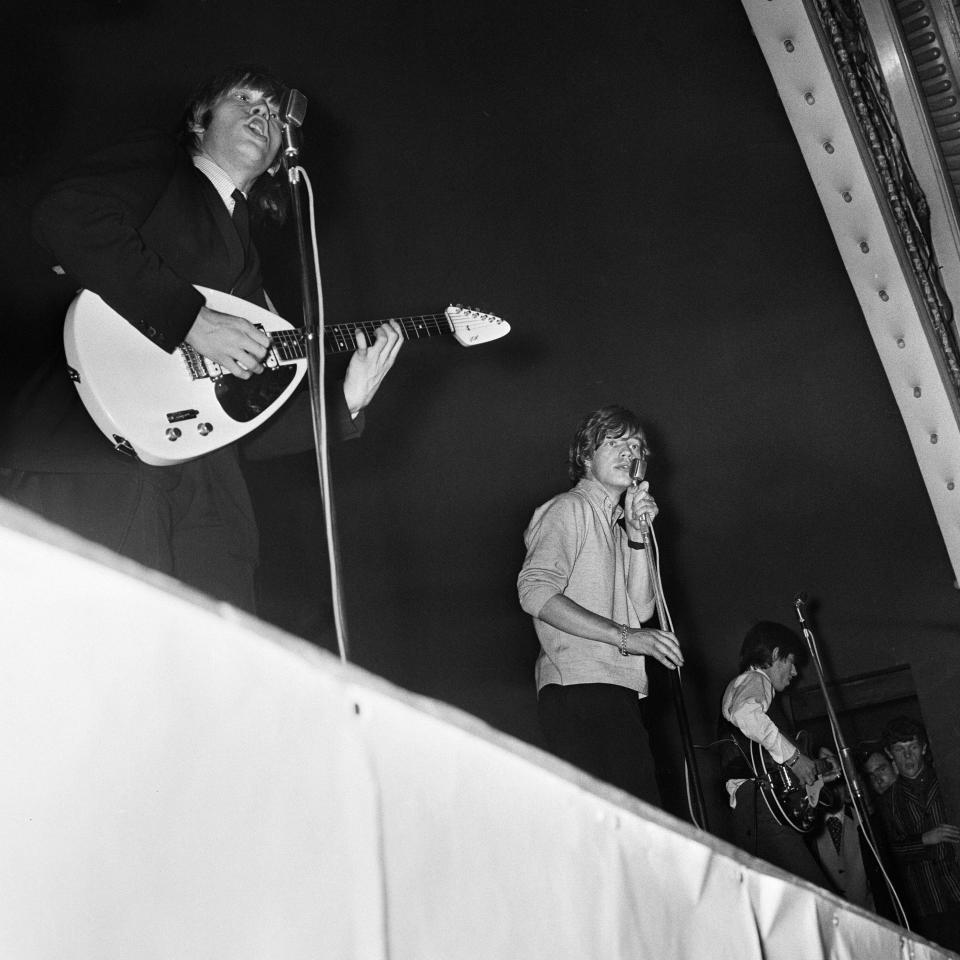The forgotten story of New Brighton Tower, once Britain's tallest building
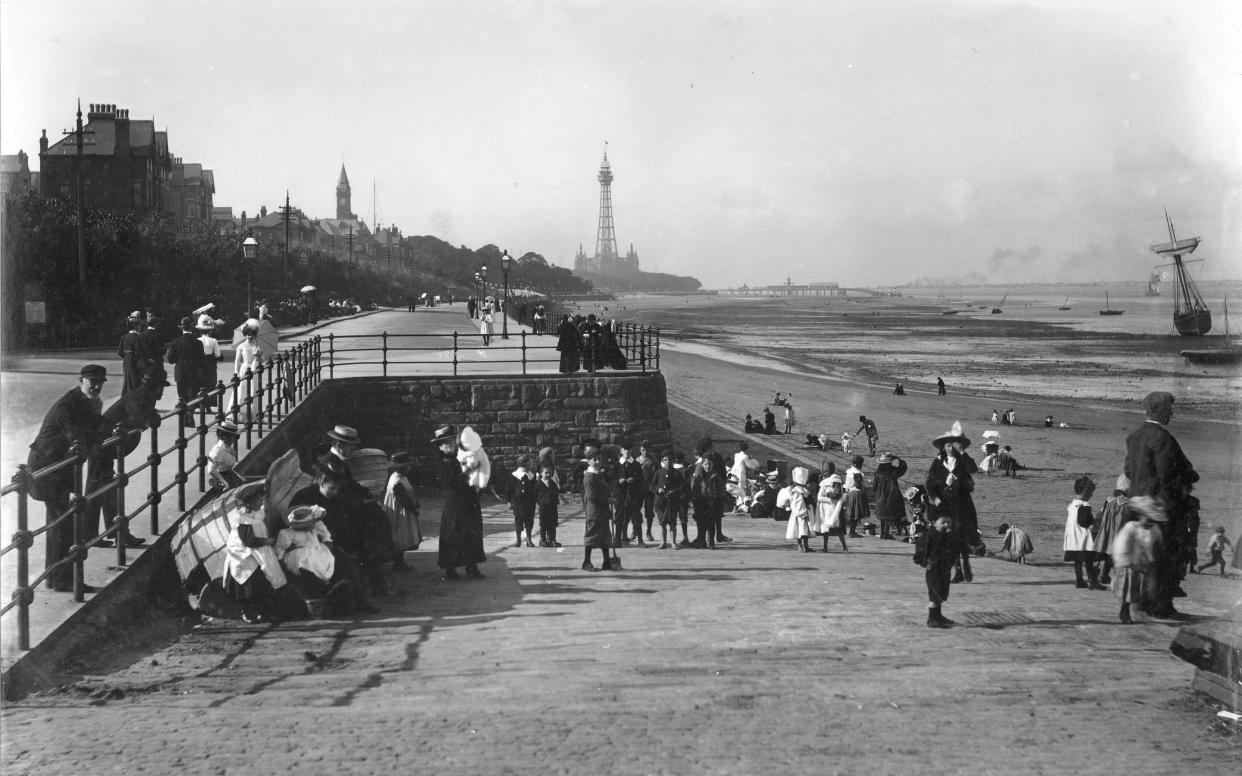
Being a country’s tallest building, even for a short space of time, is the sort of literally high achievement that normally guarantees a prominent place in history, as well as the record books. Particularly in a Britain that, until the spate of skyscraper-building in London that has given birth to One Canada Square and The Shard, was rarely known for its ventures into gargantuan architecture.
True, Lincoln Cathedral was (probably) the loftiest edifice on the planet from 1311 to 1548 – until a storm removed the top section of a spire that had grown to 525ft (160m). But for the main part, structures that push way up into the firmament, far beyond the averages of their era, have not tended to be a British thing. Much better a stately palace or an elegant mansion than the Tower of Babel reborn.
It is this relative restraint which makes the story of the New Brighton Tower so unusual. For here was a project which not only abandoned any sense of moderation; it did so, not in a major capital or a cathedral city – but on a windy promontory on the “other” side of the River Mersey. And it vanished almost as soon as it arrived, “enjoying” an existence of barely two decades before it disappeared into the footnotes of the First World War. It has been gone, this year, for an exact century – and little remains of it but faded photographs.
The tale begins in 1830, when Liverpudlian merchant James Atherton bought a 170-acre parcel of land at Rock Point, in the town of Wallasey – the tip of the Wirral Peninsula, which juts upwards, across from Liverpool, on the west side of the Mersey estuary. The Victorian tourism boom that would sweep the coastline of the country was still 30 years away – it would not really gather momentum until the 1860s – but Atherton has his eye on turning an area best known for smuggling and wrecking into a desirable destination. His plan even came with an upbeat name – “New Brighton”, in reference to the East Sussex resort, which had already established a reputation as a holiday hotspot for the wealthy, thanks to the regular visits of George IV during the Regency and later Georgian periods.
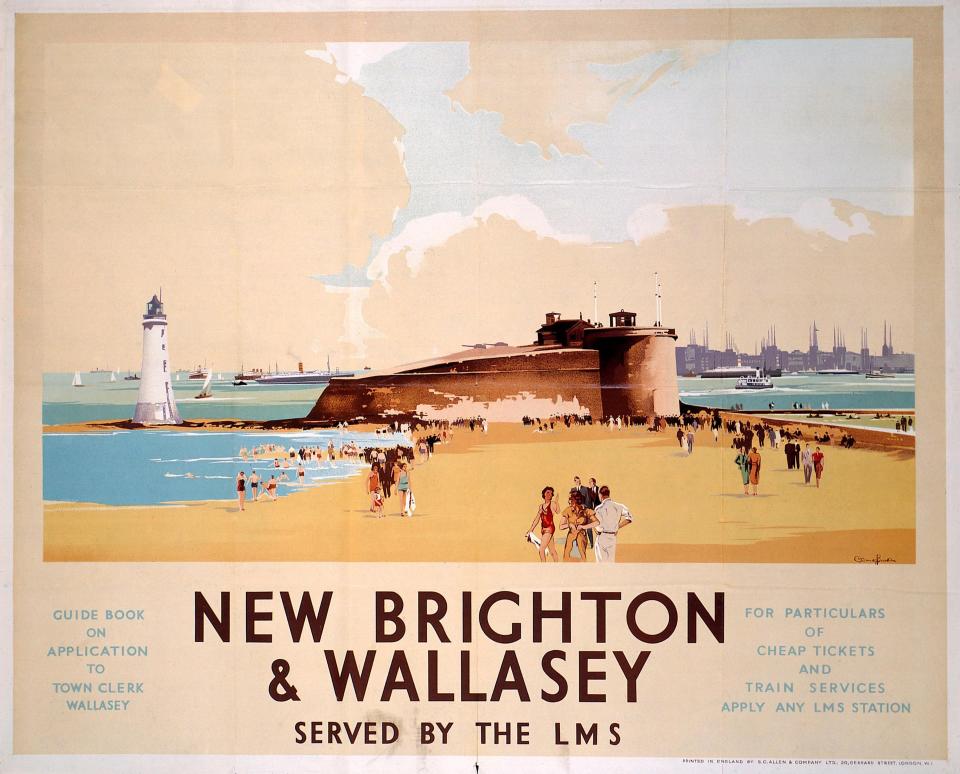
George died in the same year that Atherton made his purchase. Within seven years, Victoria would be on the throne, and Britain would be entering a new era – one where the middle and working classes would start to copy the gentry in taking breaks at the water’s edge. New Brighton would grow just as the likes of Blackpool, Llandudno, Weston-super-Mare and Great Yarmouth did, its expansion fuelled by miners and millworkers coming across the river from Lancashire’s swelling industrial towns. An immediate sign of its success was the construction of the status symbol of the time – a pier. A wooden structure began to jut out into the Mersey in the 1830s; one of the first in the UK. It would be superseded in 1868 with the opening of a 550ft (168m) wonder in sturdy iron, built by civil engineer Eugenius Birch – the Renzo Piano of his day. The Mersey ferries would moor up at it, pouring cargos of day-trippers and weekenders into a fantasy land – cafes and saloons laid out along the pier; brass bands playing these newcomers into town.

Things went so well for New Brighton that, come the last decade of the century, there was talk of creating something far greater than a pier. A landmark. A statement. In 1896, the New Brighton Tower and Recreation Company was founded. It had £300,000 in share capital and 20 acres of land to work with – and it intended to use all of it, on a tower that would make the town the talk of Britain. The ambition was far-reaching, but you did not have to look a huge distance for the inspiration. Forty miles north, Blackpool Tower had been inaugurated in May 1894, raising its head into the heavens at 519ft (158m). The speculators of New Brighton did not want to alter what was already a very successful blueprint – Blackpool Tower was itself indebted to the Eiffel Tower in Paris. They were simply going to build bigger. Ground was broken almost straight away, on June 22 1896. By the time the final pieces of this steel-lattice jigsaw were welded into place in 1900, the New Brighton Tower – all 567ft (173m) of it – had not merely bean-stalked its way past its rival on the Lancastrian seafront. It had eclipsed every other structure in the entire UK.

Its genesis was not without problems. The height and the speed of the construction threw up regular hostages to fortune, and six men were killed as the tower began to pierce the Cheshire sky – all of them falling to their deaths. Two died when a crane hook failed, sending a girder hurtling onto the platform where they were standing; a fireman plunged from a beam while trying to extinguish a blaze in 1898. Nor was it only the labourers and emergency services who were at risk. The grounds opened before the tower was completed, in 1897 – and a band was employed to whittle out a few tunes while work went on all around. This was, in every meaning of the phrase, a tough gig – the musicians would play with the nagging fear of objects being dropped onto their uncovered heads from the scaffolding above. Their director, the composer Granville Bantock, would say, of trying to perform in this environment, that “the noise of the riveting of the tower while we were playing reminded me of the anvil music in [the Wagner opera] Das Rheingold.”
But if anyone was worried that the project was an ill-fated white elephant, it was not apparent in the continuous ringing of the tills when the tower opened to the public. It was an instant hit – some half a million people rode the lifts to the top in its first year of operation. They had to pay a sixpence for this privilege – in addition to the shilling needed to enter the grounds. Few felt themselves to be short-changed. Four lifts clanked up to the observation deck. Each made the journey in 90 seconds; each could carry up to 2000 visitors every hour. The chief attraction was the view, back over the Mersey to Liverpool – but also, on clear days, across to the Isle of Man, and up to the Lake District.
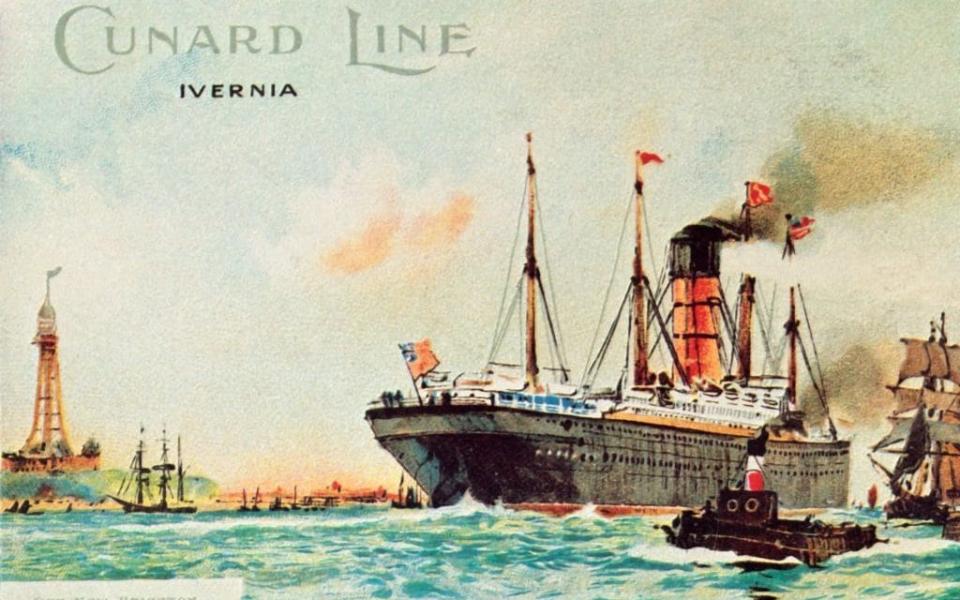
The panorama was scarcely less exciting at floor level. The grounds featured a giddy cornucopia of Victorian delights. Guests could immerse themselves in the latest accoutrements of the era. There was a shooting gallery, a billiards room, an aviary, and a funfair. There were flowerbeds and fountains. There was a lake, with uniformed gondoliers piloting Venetian-style gondolas. There were extravagant places to eat – Parisian, Japanese and Algerian themed cafes. There was a zoo where exotic animals growled and roared for the enthralled amusement of an audience born half a century too soon for the concept of the television wildlife documentary – Barbary lions, leopards, monkeys, wolves, bears skulking in a bear pit. And the whole complex was illuminated; cast in a magical glow of twinkling lights. The tower was advertised as “the highest structure, and finest place of amusement, in the Kingdom”. It was living up to this boast.

Better still, for those who wanted to be entertained as well as astonished, were the two main venues. Opened on May 30 1898, the Tower Theatre crouched between the legs of the behemoth above – though it was hardly a small matter itself. It was the largest theatre in England outside London, fitted with 2,500 seats – most of which were full for every show, as comedians and musicians ran through their acts. There were big cats here too, seven of them, trained to respond to the whip of the lion tamer Mademoiselle Marguerite.
Then there was the Tower Ballroom – an enormo-dome of its epoch, with a sprung dance-floor vast enough to accommodate hundreds of jigging feet, and a stage for the band. A relieved Bantock was soon stationed here, conducting a full orchestra, no longer having to check upwards for debris that might burst his skull mid-performance. He would have good company too – Edward Elgar conducted his own freshly finished Enigma Variations within this cavernous auditorium in 1898. This was impressive, although the composer’s place in the ballroom’s history would be overshadowed by younger men, and a very different type of music. The Beatles played the ballroom 27 times between 1961 and 1963 – of all the venues in Britain, only the Cavern Club heard Lennon and McCartney in tandem more often – as the Victorian era merged briefly with the new styles of the Sixties.
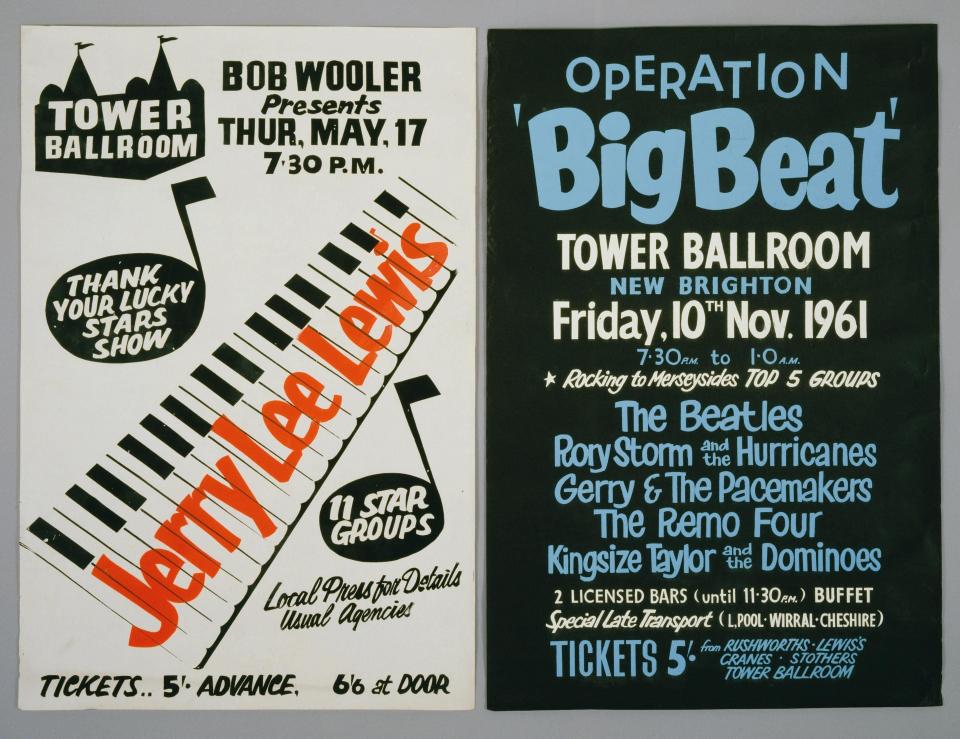
Inevitably, the Rolling Stones swaggered into the ballroom too (pictured below). A report in the August 15 1964 edition of the local Wallasey News captured both the concert of three nights before, and the uneasiness of this collision of eras – in uncertain tones and audible bemusement.
“Four thousand-plus frenzied teenagers were kept in check by thirty-odd beefy ‘bouncers’ – who rescued the fainting, and protected the long-haired beat group,” the reporter Valerie Evans wrote. “Not once during the 40-minute performance,” she added, did she “hear the voice of Mike [sic] Jagger, or the strains of the lead guitar.” Photographs from the night support her clipped description, the five fledgling Stones crammed onto the stage in front of a line of security that is less hard muscle than a group of fathers, smoking in black tie.
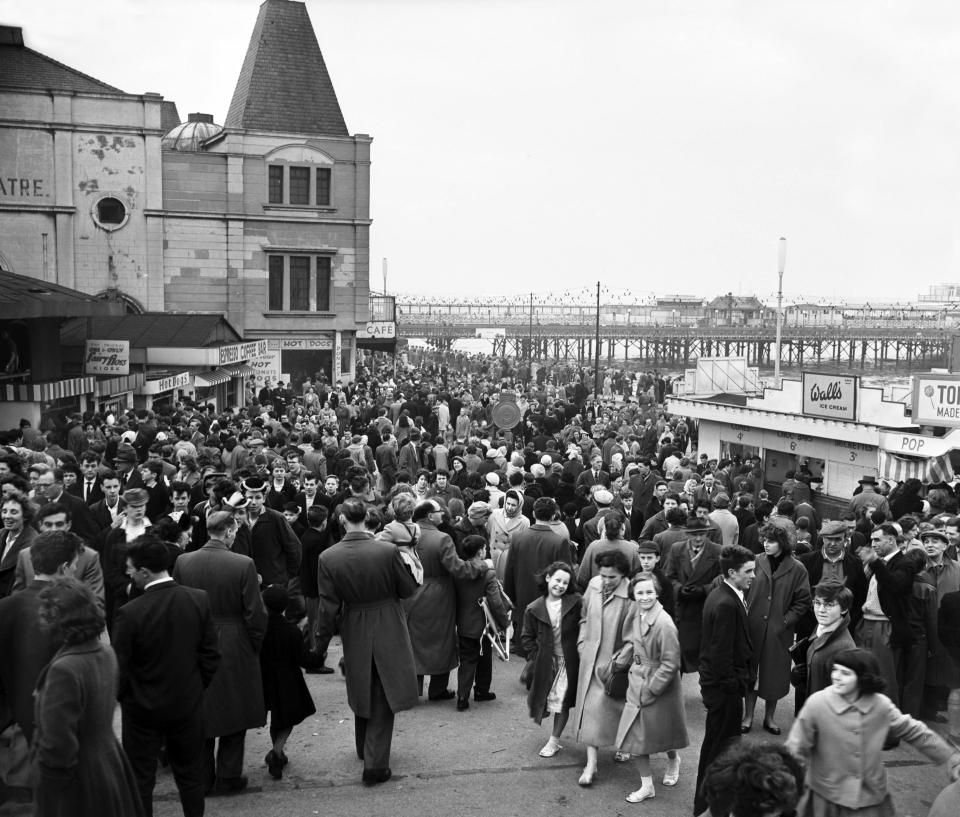
By then, of course, the “Tower” in “Tower Ballroom” was long gone. As with so much, it failed to survive the First World War. Its demise was at least mercifully swift. As the conflict raged, the cheap carbon-steel that had been used to construct the landmark – rather than the cast iron predominantly used in Blackpool – was left to the mercy of the elements. A lack of maintenance as visitor numbers fell turned into serious neglect. Rust sprouted across the framework. There was talk, at first, of the government buying the metal for repurposing in the military effort. In the end, there was nothing so symbolic. Controversy still surrounds the assertion that the structure was no longer safe, and could not be repaired – but the dismantling procedure began in 1919, and was finished by 1921. There was no second-hand heroism on the fields of Flanders. The steel was sold for scrap.
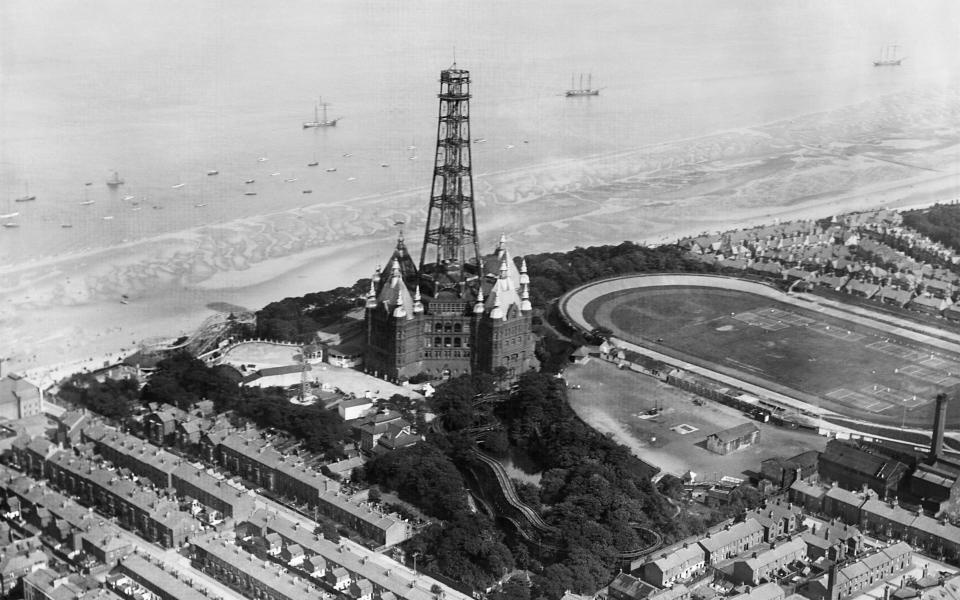
The demolition was something of a horrible prophecy for New Brighton’s future as a tourist destination. The ballroom was devoured by fire on the night of April 5 1969. The pier shut for the first time in 1968, for a second, conclusive time, in 1972 – the year after the ferries from Liverpool had stopped docking at its side. It too was taken apart, in 1978.
Little now remains of the tower, or its footprint, beyond vague records. Nearby, a blue plaque remembers those 27 Beatles shows. September 2016 news reports on the pulling-down of the 801ft (244m) main chimney at the Grain Power Station in Kent noted that it was the tallest ever structure in Britain to suffer this fate – taking away the tower’s final claim to fame. It lives on, just about, in grainy turn-of-the-century images, rearing incongruously above the houses at its feet; a near-Birkenhead Babel, out of luck and out of time; a “Britain’s biggest”, all but forgotten in the country where it enchanted so many.
